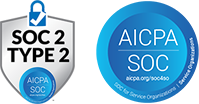What Is Furlough?
A furlough is a temporary, employer-mandated leave of absence—often unpaid or partially paid—implemented to reduce labor costs without terminating employment. Unlike layoffs, furloughed employees remain on the books: their roles technically still exist, benefits may continue (depending on policy and plan rules), and they’re expected to return once business conditions improve. HR teams track furloughs closely to manage headcount, compliance, and rehiring timelines.
Why Furlough Matters
Furloughs let organizations preserve critical talent and institutional knowledge while navigating short-term revenue shocks (economic downturns, supply-chain disruptions, government shutdowns). Done well, they provide financial breathing room without the long-term recruiting costs and culture damage of mass layoffs. Done poorly, they tank morale, create legal exposure, and spark attrition as top performers exit for stability elsewhere.
Where Furlough Is Used
- Seasonal Industries: Hospitality, retail, and tourism pause roles during low-demand months.
- Public Sector/Government: Budget impasses or shutdowns pause “non-essential” roles while retaining employment status.
- Manufacturing & Aviation: Production slowdowns trigger rotating furloughs to align labor with output.
- Startups & Tech: Cash-flow crunches prompt short, strategic furloughs to avoid deep cuts in R&D talent.
- Professional Services: Project delays or client pullbacks lead to temporary hour reductions instead of permanent exits.
Furlough Key Benefits
- Cost Control Without Severance: Reduces payroll outlay immediately, often without severance obligations.
- Talent Preservation: Critical skills and team cohesion stay intact, shortening ramp-up when business rebounds.
- Flexibility: Employers can stagger or rotate furloughs, cut hours instead of whole weeks, or recall gradually.
- Brand Protection: Communicating a furlough as a shared sacrifice can soften reputational damage versus layoffs.
- Data-Driven Decisions: People analytics reveal which roles can pause with minimal operational risk and where customer impact is highest.
Best Practices & Examples
- Transparent Criteria: Publish the logic—financial triggers, role criticality, rotation rules—to minimize perceptions of bias.
- Benefits Continuity Planning: Decide which benefits (healthcare, retirement contributions) continue and communicate clearly.
- Compliance Checklists: Ensure adherence to Fair Labor Standards Act (FLSA) rules (e.g., exempt employees’ salary treatment), WARN Act notifications, and state-specific mandates.
- Communication Cadence: Set regular updates (weekly town halls, FAQs, manager scripts) to keep furloughed staff engaged and informed.
- Recall Strategy: Use dashboards to prioritize who returns first based on skill needs, performance, and diversity goals.
- Example: A regional airline rotated ground crew on two-week furlough cycles, kept medical benefits active, and offered online training. When travel rebounded, they recalled teams in days—not months.
Conclusion
Handled with clarity and care, furloughs offer a temporary pressure valve that safeguards both budgets and talent. By grounding decisions in People Analytics, codifying fair policies, and maintaining honest communication throughout the leave and recall phases, organizations can emerge ready to scale—without rebuilding teams from scratch.
Furlough FAQs
Q: What is the meaning of furlough leave?
Furlough leave is a temporary, employer-required break from work—usually unpaid—intended to cut labor costs without ending the employment relationship or eliminating the job permanently.
Q: What does it mean when you are on furlough?
Being on furlough means you’re still employed but not working (or working reduced hours) for a set period. You may retain some benefits and are typically expected to return when the company lifts the furlough.
Q: What is the furlough period?
The furlough period is the defined span—days, weeks, or months—during which work is paused or hours are reduced. Employers should document start/end dates, recall terms, and any conditions for extension or early return.




